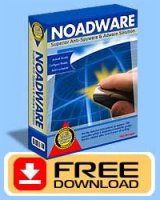 |
|
Want Some Worms with that Spam and Spyware Computer Sandwich?
Self-containment is the name of the game, when it comes to a worm. The spreading of this virus is quick and painless for itself. It can copy in its entirety or just predetermined segments. This can be spread to many systems at a time, or solely be directed to attack one network. Either way this is a true menace, it does not need a whole lot of room to operate and can spread like wild fire. The disks and files are pretty much untouched; it is the memory that is the primary target. When this bug is sent through a network, it attacks addresses of other machines and duplicates itself. With the exception of main memory, it cannot or does not attack any start files or recourses from within the computer. E-mail and networking seems to be it’s primary source of propagation. Many worms, such as the Blaster worm can easily affect well over 1 million machines worldwide. This is a very evident method of crashing computers and causing major clogs. Currently there are two different types of worms available. The network worm, and the computer host worm, is the two that are now the problem of most Internet based operation be it home or business. The worms known as host will stay on the said host machine and attack it, only traveling through e-mail attachments, or file transfers. This is where they will replicate themselves and add to the host party. The other worm is a network worm, and can contain multiple components or segments. It is possible for the worm to operate on different machines within the network. It is also possible for it to do different functions on the different machines throughout the network. The primary goal of one of these network worms is to propagate between these machines and infect the entire network in a whole. The term worm represents the coding that the virus uses to infiltrate machines, and then use them to duplicate their being and spread it to other machines within the network. The easiest method for one of these worms to enter the machine is through a security breach or hole in the system. This can also be known as an open port. It would not be impossible for a worm to attack approximately 250,000 –500,000 computers within a 7-10 hour time span, as did the Code Red worm in the year 2001. This machine attack was on windows 200, and NT 4.0 information servers from Microsoft. Three things happened, the replication within a twenty day period, the changing of the clients home page from what they had, to hacked by Chinese, and the attempted attack on the computer system within the white house. This attempt was meant to overthrow and overwhelm the computer and reap havoc. Trojan Horses and Worms are the new viral Microbes on the block. The funny thing about these host worms is, when the host worm transfers itself to another machine within a network or file transfer it is designed to destroy itself. This is to ensure that it has only one worm running at a time. The general premise of the network worm is to control the worm segments given out to the other machines from the original source. One of the biggest differences between the worm and a virus is that the worm does not stick to programs or file like a virus does. The worm is not really like a Trojan horse, or virus. They are not meant to attack home computers. They are more widely used to attack business computers or networks of large corporations. There are many programs out there, that is meant to tend to these major pests. Many times however, Microsoft has patches and problem fixes for these major pains in the butt. It would be advisable to always keep in check with the current virus alerts offered online, or with your Internet security program. About the author of: Want Some Worms with that Spam and Spyware Computer Sandwich? Thomas Hunter is an Internet marketer, author and publisher and has helped hundreds of people secure their CPU's against danger. Spyware and Adware is software made by publishers that allows them to snoop on your browsing activity, invade your privacy, and flood you with those horrible popups. If you are like most users on the internet, chances are you are probably infected with these applications. Remove harmful adware, spyware, trojans, dialers and worms today with NoAdware.net Article Source: http://netsalesinc.com If you have a website or ezine you may freely post this article on your site as long as you include the full resource box above. All links must be active / clickable with no syntax changes.
| |

